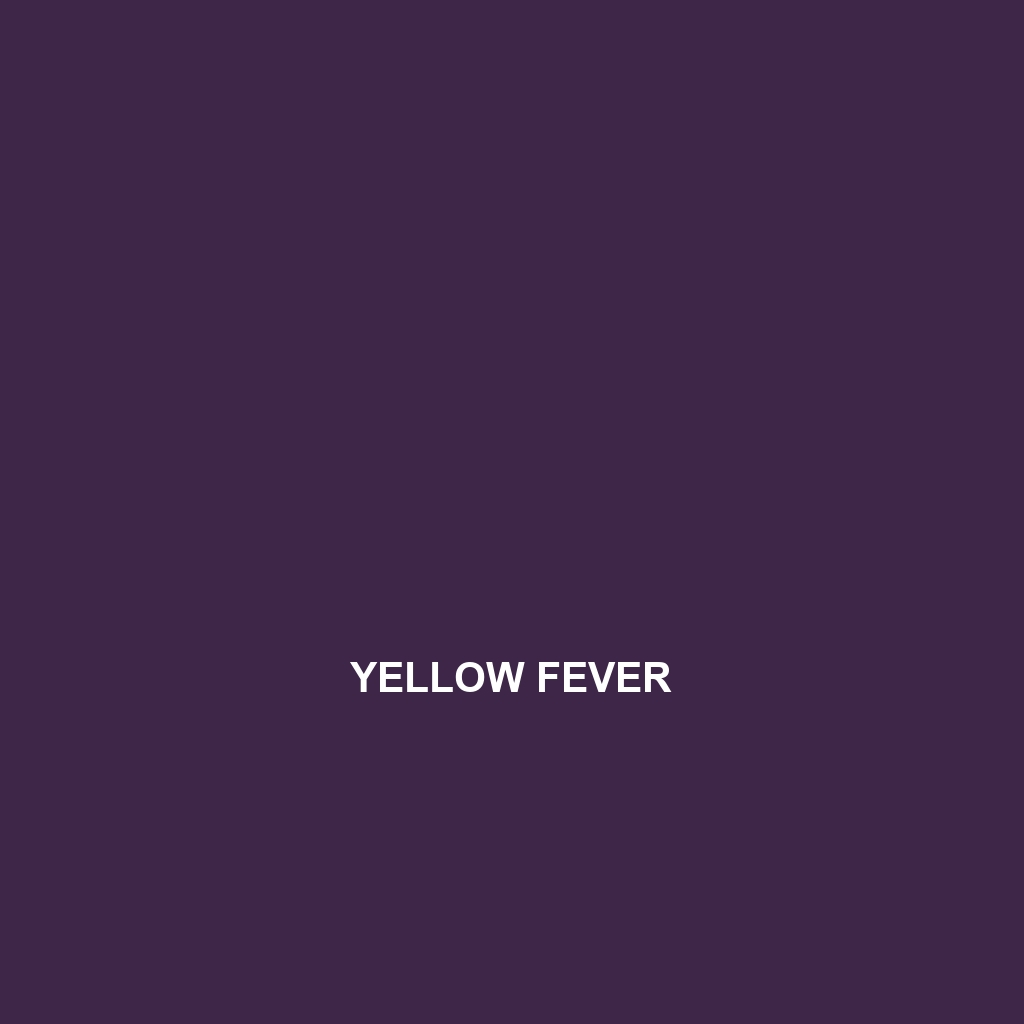Yellow Fever:
Definition and Description of Yellow Fever:
Yellow fever is a viral disease transmitted by infected mosquitoes, primarily the Aedes aegypti species. It is caused by the yellow fever virus, which is a member of the Flavivirus genus. This disease is characterized by fever, chills, loss of appetite, and muscle pain, escalating in some cases to severe liver disease that can result in hemorrhagic fever. The name “yellow fever” derives from the jaundice that affects some patients, resulting in yellowing of the skin and eyes.
Causes of Yellow Fever:
The primary cause of yellow fever is the bite of an infected mosquito. The virus can infect humans and primates. Since there is no specific host outside the mosquito, the disease is endemic to tropical areas of Africa and South America. Environmental factors such as urbanization and deforestation, which increase the contact between humans and mosquitoes, are significant in the spread of the virus.
Associated Symptoms of Yellow Fever:
Symptoms commonly associated with yellow fever include:
- Fever and chills
- Loss of appetite
- Muscle pain
- Headaches
- Nausea and vomiting
- Abdominal pain
- Jaundice (yellowing of the skin and eyes)
Diagnosis of Yellow Fever:
Diagnosis of yellow fever is typically made based on clinical evaluation and patient history, especially if the individual has traveled to endemic regions. Laboratory tests, such as serology to detect yellow fever virus-specific antibodies, and PCR tests, which can identify the virus’s RNA, are critical for confirmation.
Risk Factors for Yellow Fever:
Individuals at higher risk for yellow fever include:
- Travelers to endemic areas
- Those who engage in outdoor activities in tropical regions
- Individuals over 60 years of age
- People with weakened immune systems
Complications of Yellow Fever:
If left untreated, yellow fever can lead to serious complications such as liver failure, kidney damage, and internal bleeding. Up to 50% of patients who develop severe forms of the disease may not survive without proper medical intervention.
Treatment Options for Yellow Fever:
There is no specific antiviral treatment for yellow fever. Supportive care includes rest, hydration, and symptomatic treatment for pain and fever. Vaccination is the most effective way to prevent yellow fever.
When to See a Doctor for Yellow Fever:
It is essential to seek medical attention if symptoms of yellow fever develop after traveling to an endemic area, especially if jaundice, high fever, or unusual bleeding occurs. Early intervention can be critical in mitigating severe effects.
Prevention of Yellow Fever:
Prevention strategies include:
- Vaccination, which is highly effective and recommended for travelers to endemic areas.
- Avoiding mosquito bites through the use of repellent, wearing long sleeves and pants, and using bed nets.
- Reducing mosquito breeding sites by eliminating standing water.
Statistics and Prevalence of Yellow Fever:
According to the World Health Organization (WHO), there are an estimated 200,000 cases of yellow fever globally each year, with approximately 30,000 deaths. The disease is endemic in 47 countries, primarily in sub-Saharan Africa and tropical South America.
Personal Stories or Case Studies about Yellow Fever:
Case studies reveal not only the clinical aspects of the disease but also the significant impact on communities, with heightened awareness leading to increased vaccination efforts in affected areas. Personal experiences from survivors emphasize the urgency of vaccination and prevention measures during travel to affected regions.
Myths and Misconceptions about Yellow Fever:
Many myths surrounding yellow fever persist, including the belief that it can be contracted through food or water. In reality, yellow fever is transmitted purely by mosquito bites. Additionally, there is a misconception that vaccination is unnecessary, which is false, as vaccination is the most effective means of prevention.
Support and Resources for Yellow Fever:
For those seeking support and further information about yellow fever, the CDC Yellow Fever Page provides essential resources and guidance on prevention, treatment, and vaccination.
Conclusion about Yellow Fever:
Yellow fever remains a serious public health concern, primarily affecting individuals in endemic regions and travelers to these areas. Understanding its causes, symptoms, risk factors, and prevention strategies is crucial in combating this disease. It is vital for individuals at risk to remain informed and take protective measures, including vaccination, to safeguard their health.
